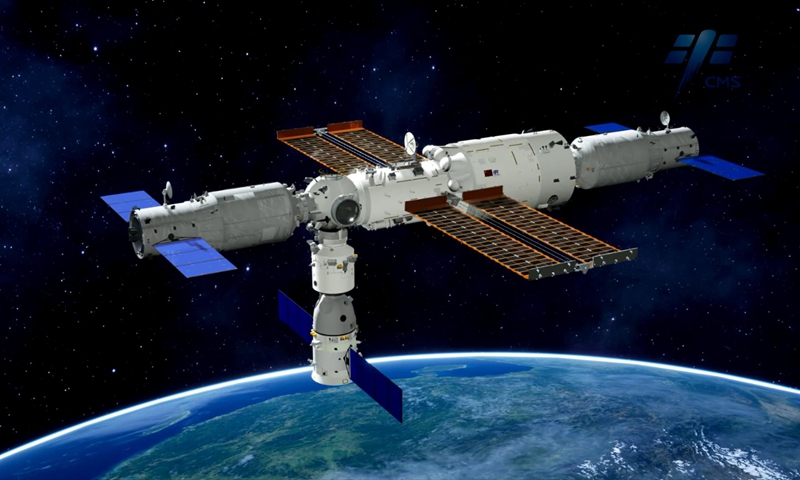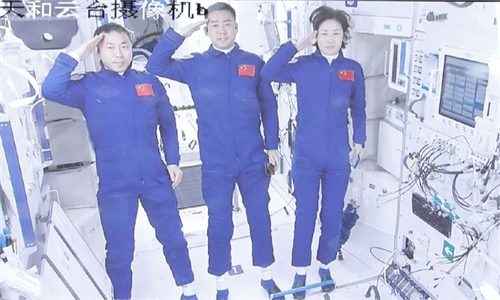
Photo:CASC
The Wentian laboratory module, the second part of China's three-module Tiangong space station, is set to be launched in July from Wenchang Space Launch Site in South China's Hainan Province, the Global Times learned from the spacecraft's developers on Wednesday.
Equipped with the same astronaut living facilities as the Tianhe core module, including three sleeping areas, a toilet and a kitchen, the Wentian module was developed by the state-owned aerospace giant China Aerospace Science and Technology Corp (CASC) .
According to the CASC, after the space station combination receives the Wentian module, taikonauts will enter the Wentian to activate the life-support system, and complete the installation of scientific cabinets to enable them to carry out experiments in orbit.
Also, the Wentian module will host a new Tiangong Classroom lecture series and the taikonauts will, for the first time, use the airlock in the Wentian module to exit the station for extravehicular activities or spacewalk missions, the CASC disclosed.
The airlock in the Wentian lab module will serve as the main exit-entry point for extravehicular activities when the construction is completed. The node cabin in the Tianhe module will serve as a backup.
Two or three spacewalks have been scheduled for the current Shenzhou-14 crew during their stay, the Global Times has learned.
Beijing Aerospace Flight Control Center has recently shot direction signals to the space station combination for altitude change with goals to make preparations for the delivery of the Wentian module.
A running test for Mengtian, another lab module, has recently been completed in Tianjin, during which Mengtian put up a great performance and laid the groundwork for its delivery.
The Mengtian lab is expected to be launched in October, Hao Chun, director of the China Manned Space Agency, said at a press conference in April.
The Wentian and Tianhe modules can support six astronauts living in space during the rotations of two spacecraft crews.
Designed to support data relay and spacecraft tracking and control, the Tianlian-2 03 satellite was launched into preset orbit on early Wednesday via a Long March-3B carrier rocket from Xichang Satellite Launch Center in Southwest China's Sichuan Province.
With the deployment of the new satellite, China has completed building of the second-generation relay satellite system in Geosynchronous orbit (GSO.)
Tianlian-2 03 is the third satellite in the system, and after testing, it will join with the Tianlian-2 01 and 02 satellites to provide nonstop communication services. Their service scope covers the whole globe.
Sources with China's space tracking and control system told the Global Times on Wednesday that it will take the Tianlian-2 03 satellite, just like other GSO satellites, a month or so to complete all the test work and become fully operational.
China's Tianlian satellites will support space-ground communication and connection, the Tiangong Classroom lectures series, spacecraft rendezvous and docking as well as spacewalk missions, space industry insiders explained.


